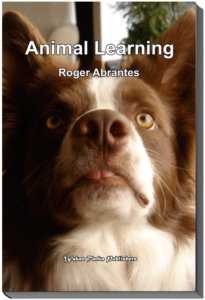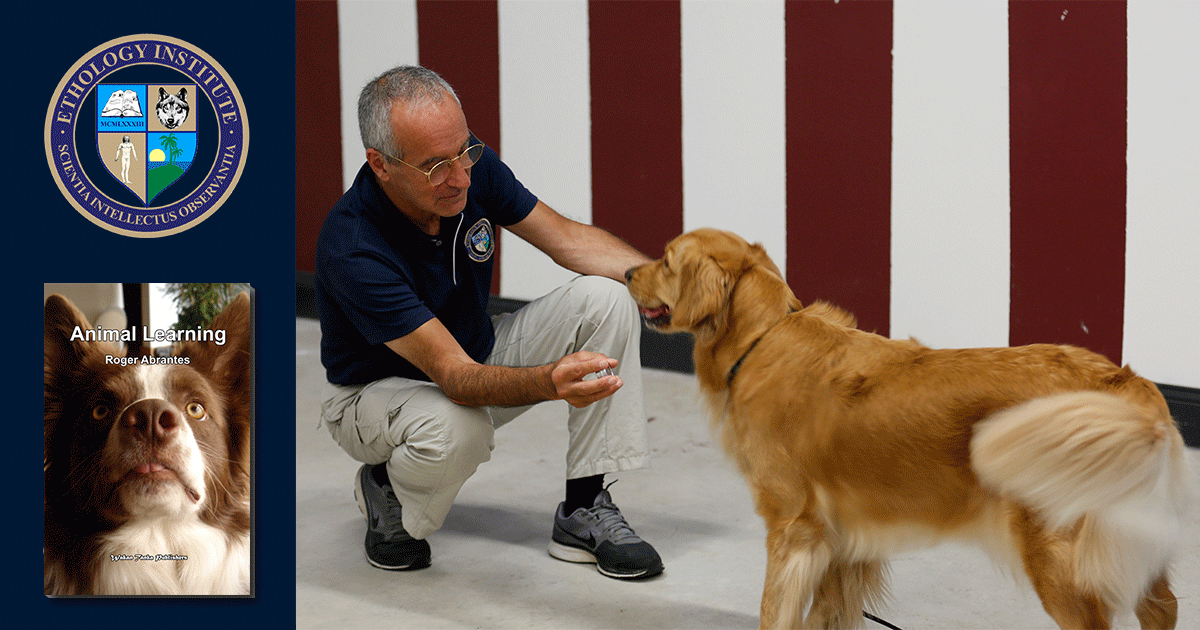Course Description
Animal learning is the science that studies how animals learn the various behaviors they display. We review all the fundamental principles of learning that you need to master for training animals or to implement behavior modification. Animal Learning is a course based on scientific evidence and research and independent of political agendas or trends. It is indispensable for animal trainers and instructors.
In lesson one, we deal with motivation; lesson two reviews classical and operant conditioning; lesson three goes into detail with learning, signals, discrimination, generalization, stimulus control, and much more.
Course Level
Intermediate to advanced. It is an essential course for an animal trainer. Some of the content is at an advanced level and may require an extra effort on your part. Join the course forum and pose any question you may have. Your tutors will answer you. You should, preferably, have taken Evolution and Anatomy and Physiology before you take Animal Learning.
Course Textbook
“Animal Learning”
by Roger Abrantes, Ph.D. in Evolutionary Biology and Ethology.
Book contents
Chapter 1 Learning.
Chapter 2 Signals.
Chapter 3 Discrimination, generalization, and stimulus control.
Chapter 4 Increasing and decreasing behavior.
Chapter 5 Reinforcement schedules.
Chapter 6 Advanced operant procedures.
Chapter 7 Plan of action.

Supplementary Literature
Although not mandatory, we recommend that you supplement your readings with:
- Abrantes, R. (1997) Dog Language – An Encyclopedia of Canine Behavior. Wakan Tanka Publishers.
- Abrantes, R. (1997). Dog Language – An Encyclopedia of Canine Behavior. (eBook edition).
- Abrantes, R. (2016). Animal Training My Way—The Merging of Ethology and Behaviorism. WT Publishers (Ethology Institute online book).
- Case, L. P. (2005) The Dog: Its Behavior, Nutrition and Health. Wiley-Blackwell.
- Chance, P. (2008). Learning and Behavior: Active Learning Edition. Cengage Learning; 6 edition.
- McFarland, D. (1982) The Oxford Companion to Animal Behaviour. Oxford University Press, Oxford.
- McFarland, D. (1998) Animal Behaviour. Benjamin Cummings. 3rd ed.
Online Studying and Tutoring
Watch the movie(s) and read the book(s). Join the course forum where you can read our tutors’ answers to questions previously posed by your colleagues. If you have a new question, do not hesitate in posting it.
The course forum is solely for academic questions. For administrative matters or difficulties accessing the functionality of the site, please submit a ticket.
Once you’re ready for it, take the quizzes. You may take a quiz as many times as you like. We recommend you re-take quizzes once a year as a self-imposed quality control.
Supplementary Literature
Although not mandatory, we recommend that you supplement your readings with:
- Abrantes, R. (1997) Dog Language – An Encyclopedia of Canine Behavior. Wakan Tanka Publishers.
- Abrantes, R. (1997). Dog Language – An Encyclopedia of Canine Behavior. (eBook edition).
- Abrantes, R. (2016). Animal Training My Way—The Merging of Ethology and Behaviorism. WT Publishers (Ethology Institute online book).
- Case, L. P. (2005) The Dog: Its Behavior, Nutrition and Health. Wiley-Blackwell.
- Chance, P. (2008). Learning and Behavior: Active Learning Edition. Cengage Learning; 6 edition.
- Darwin, C. (1859) On the origin of species by means of natural selection, or the preservation of favoured races in the struggle for life. London: John Murray. 1st ed.
- Dawkins, R. (2006) The Selfish Gene. Oxford University Press, USA.
- McFarland, D. (1982) The Oxford Companion to Animal Behaviour. Oxford University Press, Oxford.
- McFarland, D. (1998) Animal Behaviour. Benjamin Cummings. 3rd ed.

